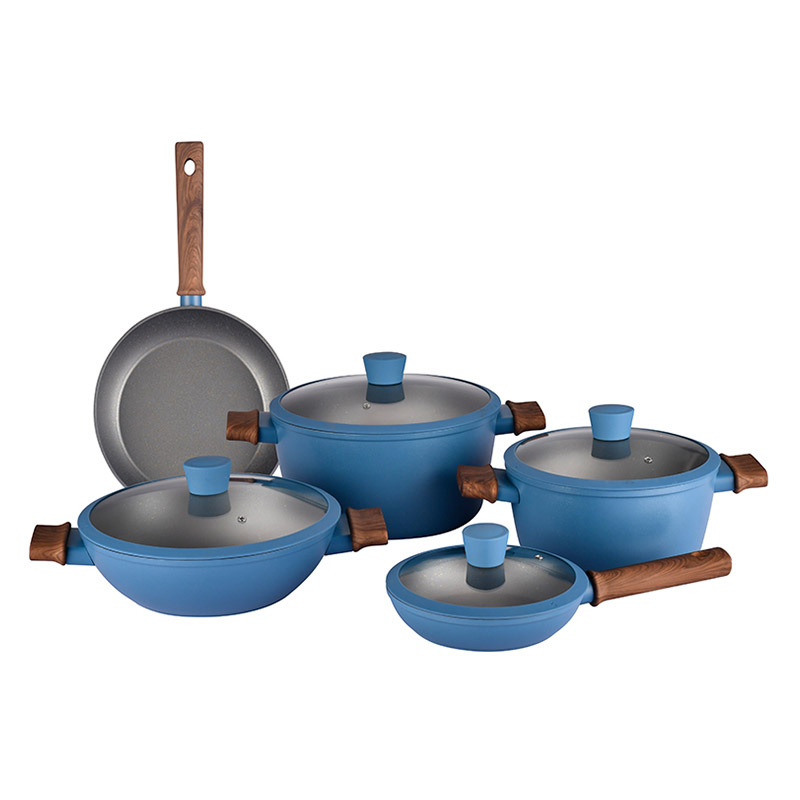
In light of the increasing upgrade of consumption in home appliances and kitchen tools, the needs of consumers are changing and now favor the multifunctional integrated product experience rather than single feature standalone products. Multi-functional pots have become a mainstream product in the cooking utensil market in recent years, and so have the manufacturers of non-stick pots. Through continuous research and development in technological innovation and design optimization, non-stick cooking utensils manufacturers have integrated multiple functions into the products, making the cooking experience more pleasant, effective, and healthy for the users.
Trend-Driven: A Confluence of Factors Fueling the Integration Wave
The emergence of the "multi-functional cookware" trend arises from a confluence of consumer behavior, market conditions, and technological progress.
The evolution of consumer demand is perhaps the most critical. Today, family kitchens often have limited space and the increasingly younger consumer demographics lean towards the "minimalist" lifestyle which avoids a cluttered kitchen brimming with appliances. A space-saving and a pot capable of frying, stewing, steaming, and baking is both efficient and ideal.
Due to intensified market competition, manufacturers of non-stick cookware are shifting away from simplistic durability marketing. Companies pursuing functional integration can diversify and avoid price competition, thus, creating new "blue ocean" markets.
Advancements in technology have made this feasible. Companies producing non-stick cookware are striving to improve materials, coatings, and designs. These changes include the use of thicker substrates for uniform heat conduction, developing stronger ceramic coatings, and composite bottoms capable of enduring varied heat sources. Enhanced user experience through "multi"
Evolution of form: from "pots" to "cooking systems"
In the past, functional integration might have been limited to "frying and stir-frying," but today it has evolved into systematic, modular combinations.
The mainstream approach is a modular design of "pot body + accessories." A core pot body, paired with steam racks, baking trays, frying pans, or air fryer baskets, can quickly switch between different functions. Non-stick cookware manufacturers are even building their own accessory ecosystems to increase user loyalty.
As an illustration, some brands are pursuing electrification and intelligence, like the launch of multi-purpose cookware super heat and multi-functioning, enabling features like oil-less frying and slow cooking at low temperatures. Tech advance is visible as the user connects to an app and selects different recipes.
In the work of the design, the body of the pot is enhanced at the edges to better bear stronger accessories, the glass lid is enhanced to provide better sealing, and the handle is now heat resistant and removable to aid in storage and serving. From an ergonomics standpoint, these changes are the result of real world use understanding by non-stick cookware producers.
Health and convenience are dual priorities
Modern consumers place greater emphasis on dietary health. Non-stick cookware manufacturers have incorporated low-oil or even oil-free cooking designs into their functional integration to meet low-fat dietary needs. At the same time, ease of cleaning is also an important consideration. Removable components and easy-to-clean coating designs ensure that "multi-functional use" does not add to the user's burden.
Challenges and future development
Despite the promising prospects, the path to functional integration is not without challenges. Consumers may question whether the performance of a "multi-functional pot" can match that of a single-function pot, which requires non-stick cookware manufacturers to continue investing in materials and coatings to ensure professional-level performance.
On the other hand, functional integration inevitably increases costs and accessory complexity. How to price products so that users perceive value rather than being deterred by high prices is a challenge that companies must address.
In the future, manufacturers of non-stick cookware will make significant advances in modular design, environmentally friendly materials, and smart application technologies. By responding to health-conscious food trends and smart home ecosystems, the multifunctional pots of the future will function as solutions for the entire kitchen, rather than simply as cooking utensils.



 Español
Español عربى
عربى

